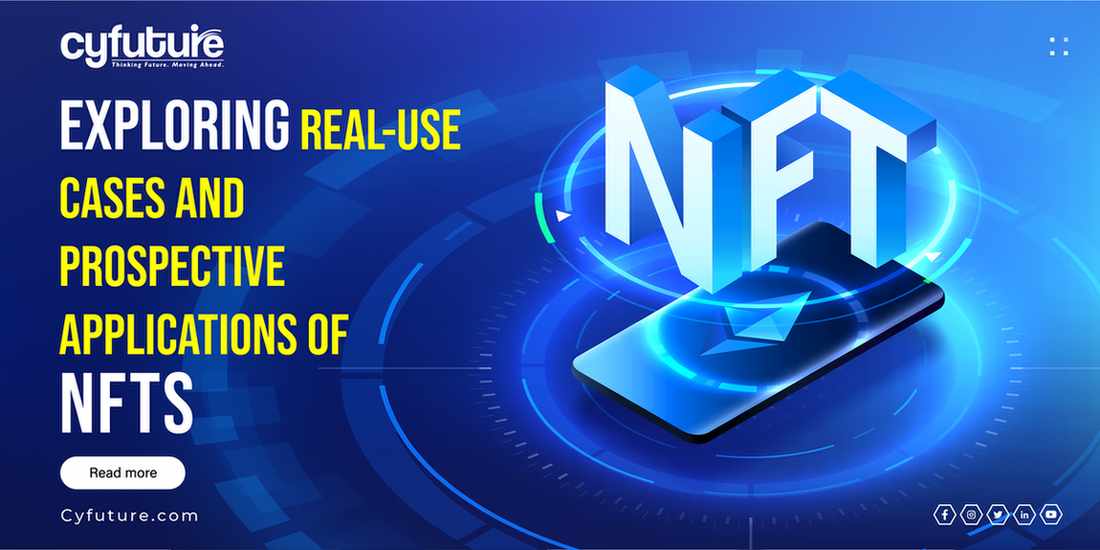Toggle navigation

Humankind is foraying into a technological revolution. Engineers and experts are contemplating the prospects and applications of the latest technologies like Artificial Intelligence, Machine Learning, cryptocurrencies, Blockchain, Metaverse, Web3, etc. Similarly, digital advancements have brought a new form of digital asset known as Non-Fungible Tokens (NFTs); a cryptographic asset backed by blockchain technology.
NFTs are unique, intangible, untameable, and completely secure digital assets; the prospective applications are still under observation. The fascinating feature of NFTs is they are irreplaceable and can’t be meddled with other digital assets; their uniqueness and limited quantity make them formidable and valuable at the same time. NFTs can be used as digital currencies and; at the same time used for authentication and ownership.
The concept can be mind-boggling to some people and quite simple for some. Anything that is digital, we can transform it into a non-fungible token, it depends on the creator. For example, A digital artwork was sold for almost $70 million, it was bought by an eminent NFT collector. It is the most expensive crypto art there has ever been. Similarly, CryptoPunks 10,000 pixelated images with unique characteristics traded for thousands of dollars once.
Blockchain is a high-level cryptographic technique that can convert all sorts of digital content or data into a non-fungible token. NFTs are only accessible by authorized personnel possessing the unique key. This makes the digital asset safer and more secure. On the whole, NFT technology offers better accessibility over a global network, it is easily affordable, neither complex nor technical. Everyone can create an NFT.
There is a plethora of real-world use cases of NFTs as they replicate the features of physical objects and despite being digital, they are still intellectual properties. The NFTs don’t just limit to being digital content like 2D or 3D, the applications of NFTs are far more extensive. Let us explore some of their practical uses.
Blockchain offers formidable encryption methods; fool-proof enough to keep digital information from leaking. Thus, NFTs can be greatly useful for authenticating the legitimacy of the products. We create blocks for storing data, and protect them using strong encryption methods like hash key function.
We can authenticate a product by assessing the manufacturing details the product which is unique for every product. Nowadays, it is pretty easy to dupe products and make them look completely legitimate to the naked eye. The sure-fire way of authenticating them could be through NFTs that are literally implausible to dupe.
NFT encircles a distributed ledger system that can store data safely; ideal for safekeeping the confidential medical records of patients. Medical records are often subject to various internal and external threats, for various fraudulent activities and concealing the truth from authorities. NFT-based ledgers are top-notch systems for keeping patients’ data safe from malicious manipulation attempts by internal or external entities.
Tokenizing your digital asset can be a smart way of patenting and NFT provisions allow the users to protect the intellectual property through a unique ownership authentication method. Conventional methods of establishing the ownership of any piece of digital content involves using rights tools. NFT offers distinguished ownership of digital assets that also includes timestamps of data transition from one phase to another throughout its history.
NFTs play a critical role in the gaming industry; NFTs applications match perfectly with gaming platforms. NFTs have now become an intrinsic part of different gaming , we use them as collectables and currencies in various gaming platforms; used for gathering or trading gaming assets inside the game. Also, we can use NFT-based assets across different gaming platforms as common denominations for payments and other transactions.
Most of the irregularities happen in the supply chain industry only. During the import/export of products across borders, products transmission occurring at different checkpoints can be disruptive. it makes them susceptible to various piracy-related threats. The food industry has to pay more attention and draw counter-measures to protect their products from unauthorized access during transport.
Read More: Five Real World Applications of Block Chains
It is almost impossible to accurately track and verify the products coming from long distances; also to check their authenticity. Using NFT identifiers we can accurately check the product’s authenticity and track the entire history of its transport. Blockchain technology helps in encrypting NFT identifiers that makes them completely impervious to all kinds of data breaches. So, it is impossible to hack into the system. Therefore, NFTs can work cohesively with the supply chain.
Additionally, NFTs can benefit various other areas such as procuring election votes, protecting academic credentials, ticketing, artwork tracking, and real-estate-related documentation, etc. At this moment, NFTs are still in the adolescent stage. The experts are yet to explore more applications and possibilities of using NFTs.